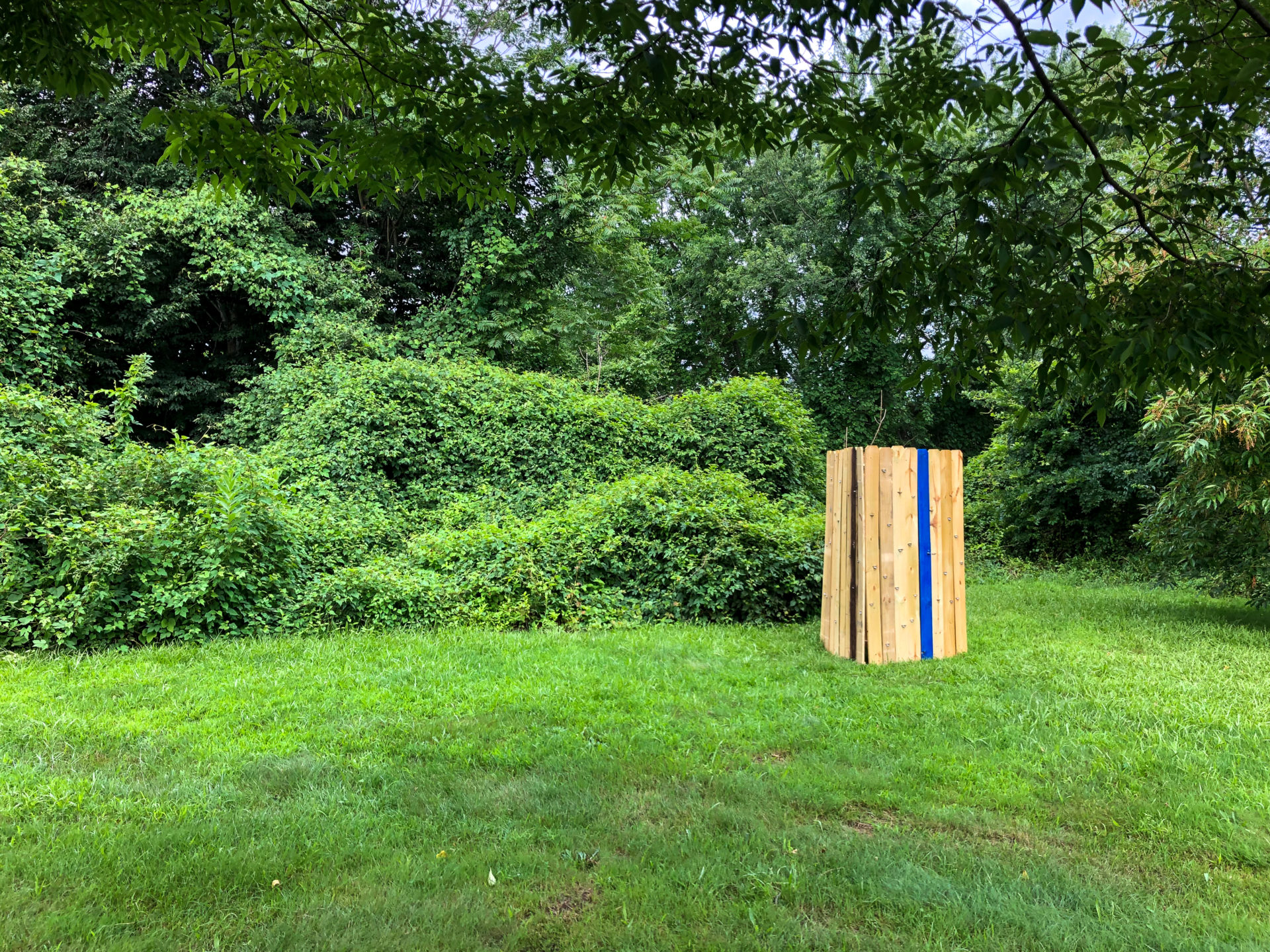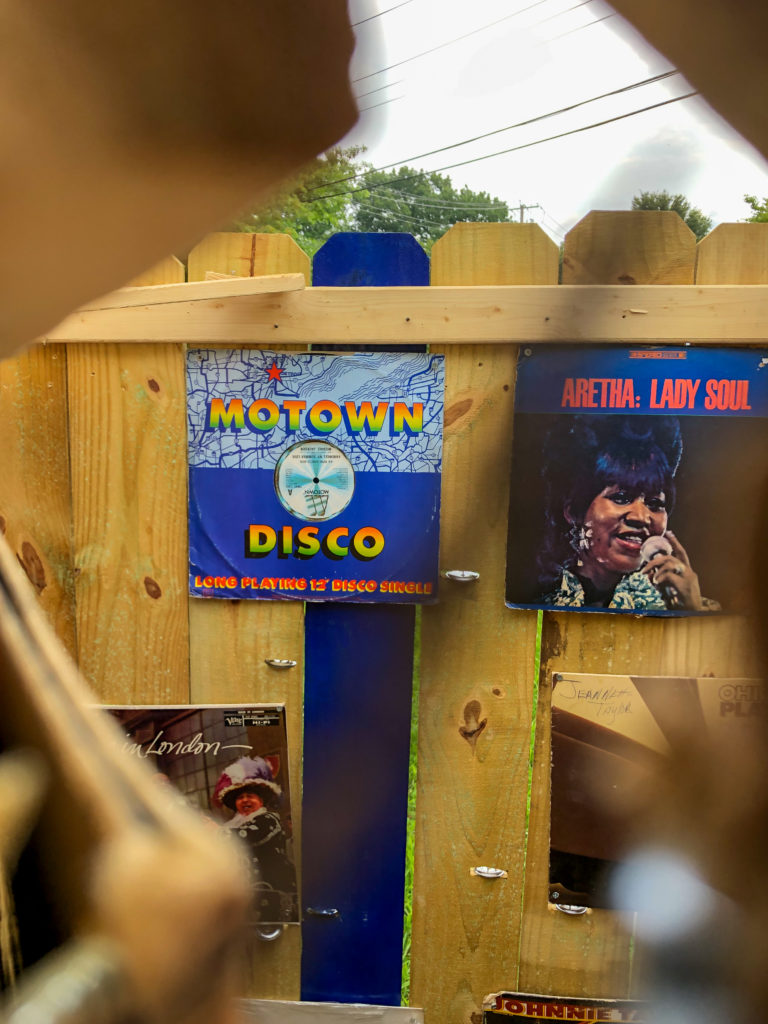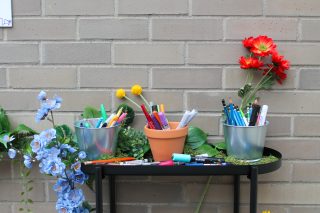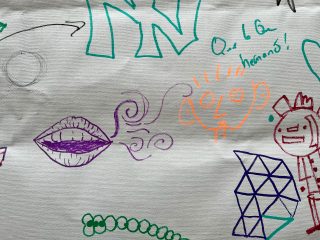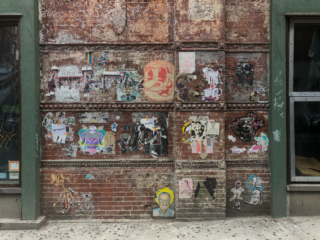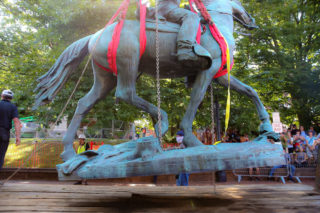From the sidewalk, you might see it from across the street. It looks like it’s supposed to be there, a bit of straightforward wooden fencing that might contain an electrical box or some other public utility. But if you look closely you’ll notice the solitary panel in deep blue, and if you cross the street you’ll see the wood is patterned and that together, the whole of this object stands as an entirely different kind of public utility: a sculptural offering that provides a protective embrace in an altar that knits together music and the celestial world within—and for—a community.

Nathaniel Donnett created this public installation, Sub-woofer, on a Sunday this past July and the sculpture stands in an undisclosed location in New Haven as the start of a public, visual conversation with the community living directly around it. As the artist described it, “It’s another band member in the group ensemble” that is the public space. Donnett selected this location because its neighborhood is mostly working-class Black people—the kind of neighborhood plagued by education and housing issues while also a target for gentrification. “These neighborhoods remind me of the neighborhoods I was raised in,” he said, writing to me via email that these overlooked neighborhoods contain significant cultural value that often become co-opted by institutions—institutions which continue to neglect their complicity in this theft or give back to the communities that allow them to grow and flourish. “Those relationships seemed strained or rarely coincide,” he said, “The piece speaks to that complex relationship in a general way.”
Consisting of three wood panels leaning against one another at their edges, the triangular fence subverts notions of access. Through the slats in the panelling, and in a pattern of cut-outs, each containing a pair of tambourine jingles, you can see an installation within the interior of an inaccessible space, made up of records representing some of America’s greatest musicians: Count Basie, Roscoe Robinson, the Jackson 5, Nancy Wilson, Aretha Franklin, Gladys Knight, Louis Armstrong. If you’re tall enough, you can peer over the “fence” to catch a full view of the records within, but there’s a strong sense of interiority versus exteriority, what’s protected as opposed to what’s viewable from afar.
The tambourine jingles that allow for this visual gateway into the piece were selected by the artist because of their use in the Southern Black church and function as an implication of sound and movement, as a means of bringing rhythm and accent to the familiar, static panelling of the wood. “I was at a funeral a couple of years ago and noticed that it [the tambourine] was played as a single solo instrument, but the jingles acted as a collective,” Donnett shared, “That reminded me how people employ acts of individualism, and collective action as not a singular thing but a multiplicity of actions.”
Since it was a Sunday, the installation of the piece itself was uneventful. It took three visits to the site and an extra trip to the record store, but no one approached the artist as he worked. “I think sometimes people can sense your energy,” he said, “They can sense if you’re there to harm or to create problems.” After setting up the piece’s wooden infrastructure, Donnett returned, installing the albums purchased from a local record store intuitively on-site.
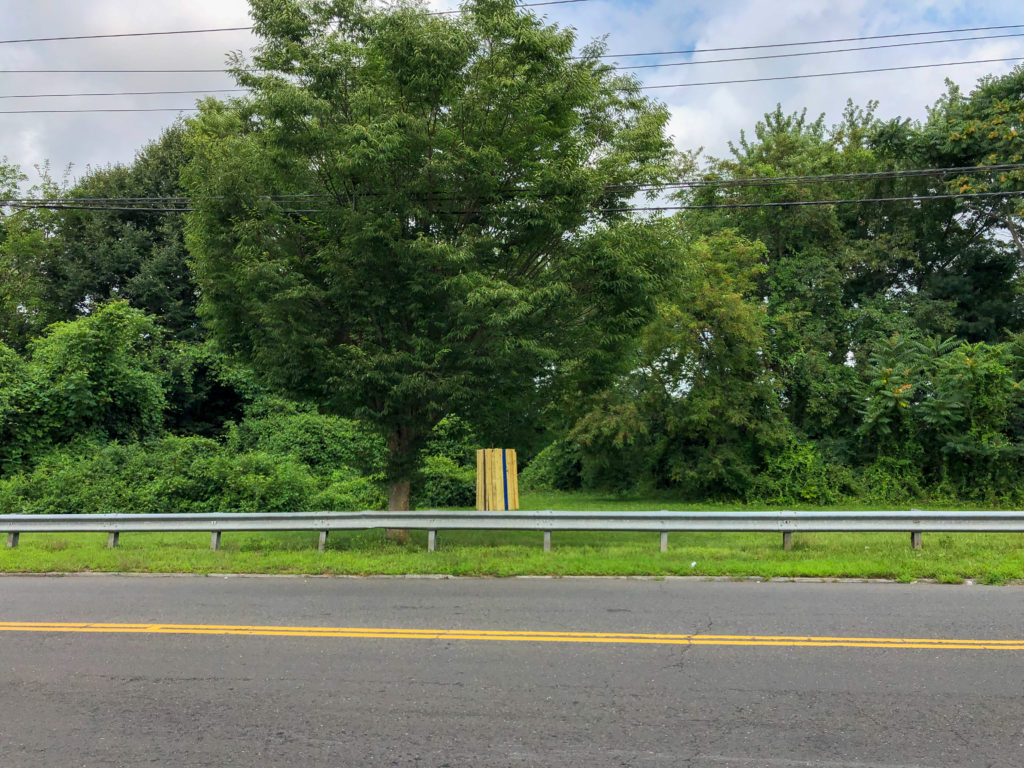
The patterns of the tambourine jingles reference the constellations of stars, employing elements of sacred geometry to create a percussive grid that’s both implemented and disrupted by the viewer’s own expectations of where the next dash of silver will lie. “The pattern utilizes a visual language where sound is silent,” said the artist, “and expected based on our personal relationship to sound, socializing of sound, and social agreement.”
The line of blue that signals the piece from afar works almost like a metronome keeping time, enhancing the polyrhythmic presence of the work. The rich ultramarine reaches back art historically across continents, through Egyptian, Buddhist, and European paintings to the first use of the stone, Lapis lazuli. For Donnett, the color represents both spirituality and humanity, and its implementation here, on a single piece of wood reveals “the individual amongst many other individuals.”
To the artist, the blue line (almost a Barnett Newman-type “zip”) is especially important “considering the shift in the spatial and symbolic dynamic when approaching the piece.” The color works to translate the object from utilitarian to sculptural, from intellectual to spiritual, from exclusion to invitation, from artist to community and back again.
An edited version of this article was published in the New Haven Independent on Aug. 19, 2021.

